June 23rd, 2015
Buried in an ornate two-wheeled chariot and richly adorned with jewelry, a 2,500-year-old skeleton was discovered by archaeologists near Lavau, France, about 90 miles southeast of Paris.
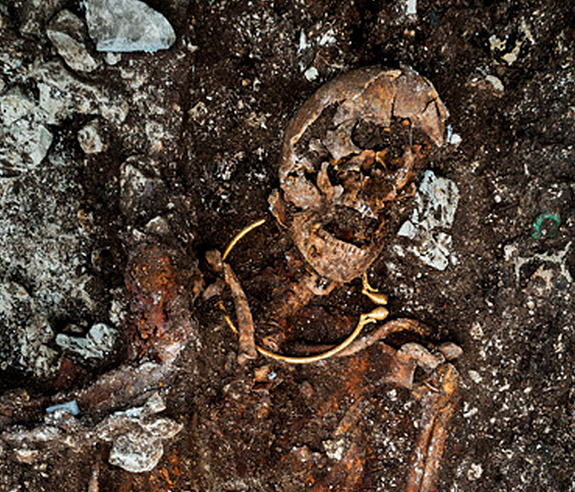
Finely worked amber beads, a jet armband, two gold bracelets and an elaborate solid gold torque necklace, weighing 1.2 pounds and decorated with winged monsters, were still on the skeleton.
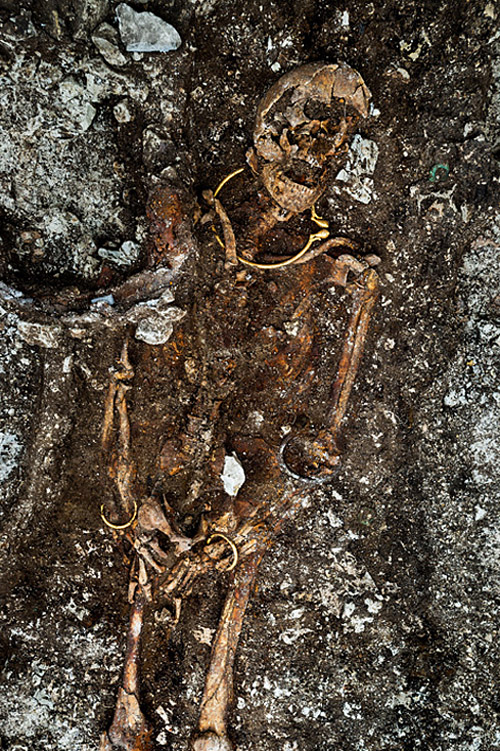
The tomb was filled with bronze, silver and gold artifacts, leading the researchers with France's National Archaeological Research Institute (INRAP) to speculate that the skeleton was a person of royalty. A debate continues, however, as to whether their subject is a prince or a princess.
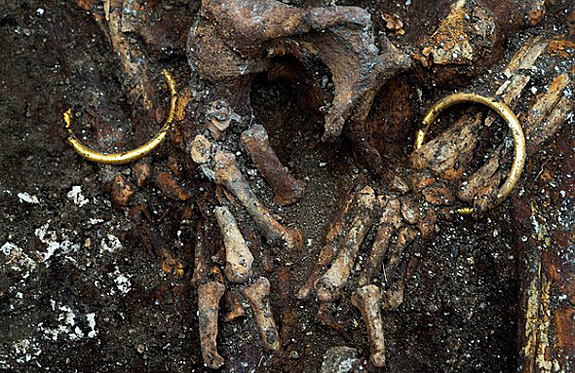
Due to the age of the skeleton and the poor preservation of the bones, scientists were not able to determine its gender.
A sword found in the grave suggested that the individual may have been warrior. Still, that fact doesn't solve the riddle, because Celtic warriors of the fifth century BC were both male and female.
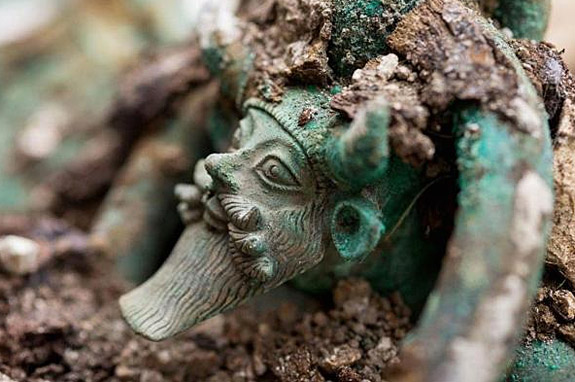
Also found at the site was a large bronze cauldron featuring four handles decorated with the likeness of Achelous, a horned river god of the ancient Greeks.
International Business Times reported that the skeleton was found in a huge burial mound, called a tumulus, that was excavated earlier this year. It covered 7,655 square yards and was surrounded by a ditch and a palisade. The archaeological site is adjacent to a new commercial center that was in the early stages of development when the ancient tumulus was discovered.
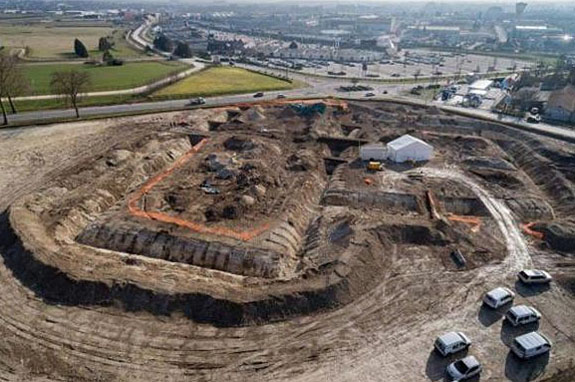
INRAP explained in a statement that the period between the late sixth century BC and the beginning of the fifth century BC was characterized by the economic development of Greek and Etruscan city-states in Western Europe. Mediterranean traders came into contact with the continental Celtic communities as they searched for slaves, metals and precious gems, including amber.
Photos courtesy of INRAP.

Finely worked amber beads, a jet armband, two gold bracelets and an elaborate solid gold torque necklace, weighing 1.2 pounds and decorated with winged monsters, were still on the skeleton.

The tomb was filled with bronze, silver and gold artifacts, leading the researchers with France's National Archaeological Research Institute (INRAP) to speculate that the skeleton was a person of royalty. A debate continues, however, as to whether their subject is a prince or a princess.

Due to the age of the skeleton and the poor preservation of the bones, scientists were not able to determine its gender.
A sword found in the grave suggested that the individual may have been warrior. Still, that fact doesn't solve the riddle, because Celtic warriors of the fifth century BC were both male and female.

Also found at the site was a large bronze cauldron featuring four handles decorated with the likeness of Achelous, a horned river god of the ancient Greeks.
International Business Times reported that the skeleton was found in a huge burial mound, called a tumulus, that was excavated earlier this year. It covered 7,655 square yards and was surrounded by a ditch and a palisade. The archaeological site is adjacent to a new commercial center that was in the early stages of development when the ancient tumulus was discovered.

INRAP explained in a statement that the period between the late sixth century BC and the beginning of the fifth century BC was characterized by the economic development of Greek and Etruscan city-states in Western Europe. Mediterranean traders came into contact with the continental Celtic communities as they searched for slaves, metals and precious gems, including amber.
Photos courtesy of INRAP.



